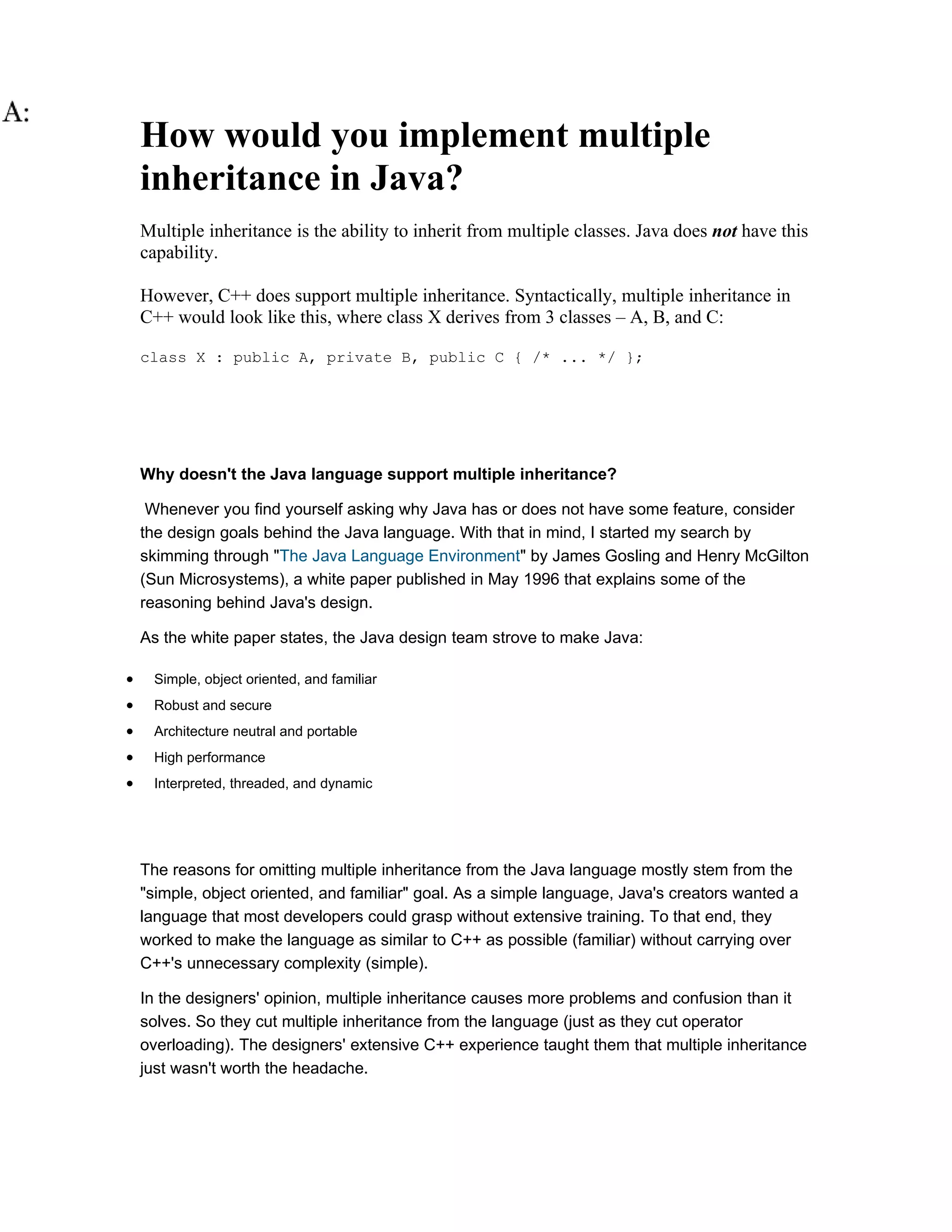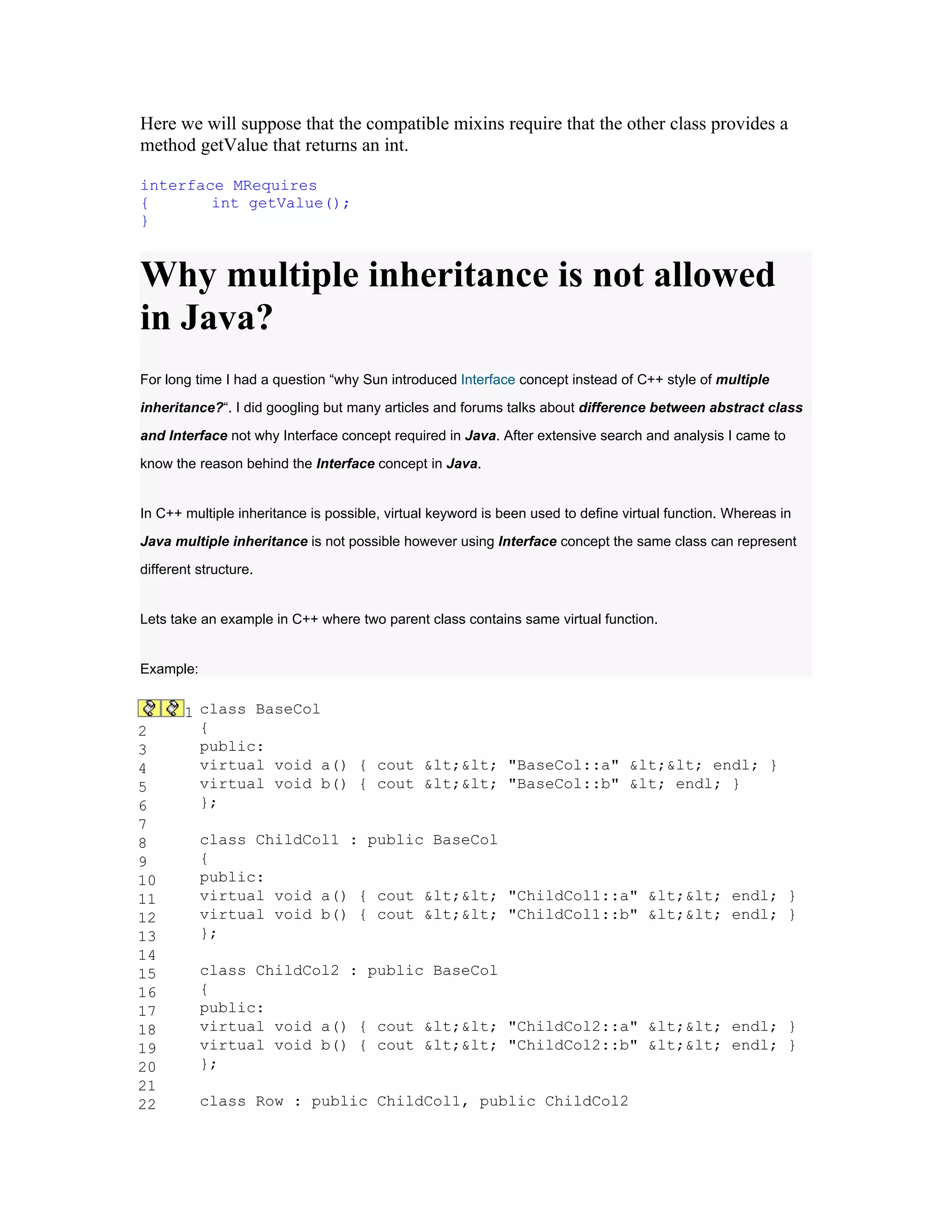Java does not support multiple inheritance to avoid complexity and ambiguity problems. Interfaces were introduced instead, allowing a class to represent different structures by implementing multiple interfaces. In C++, multiple inheritance can cause ambiguity errors at runtime if two parent classes define the same method. Java's single inheritance with interfaces avoids this problem by not allowing method implementations in interfaces, so there is only one implementation per method.




